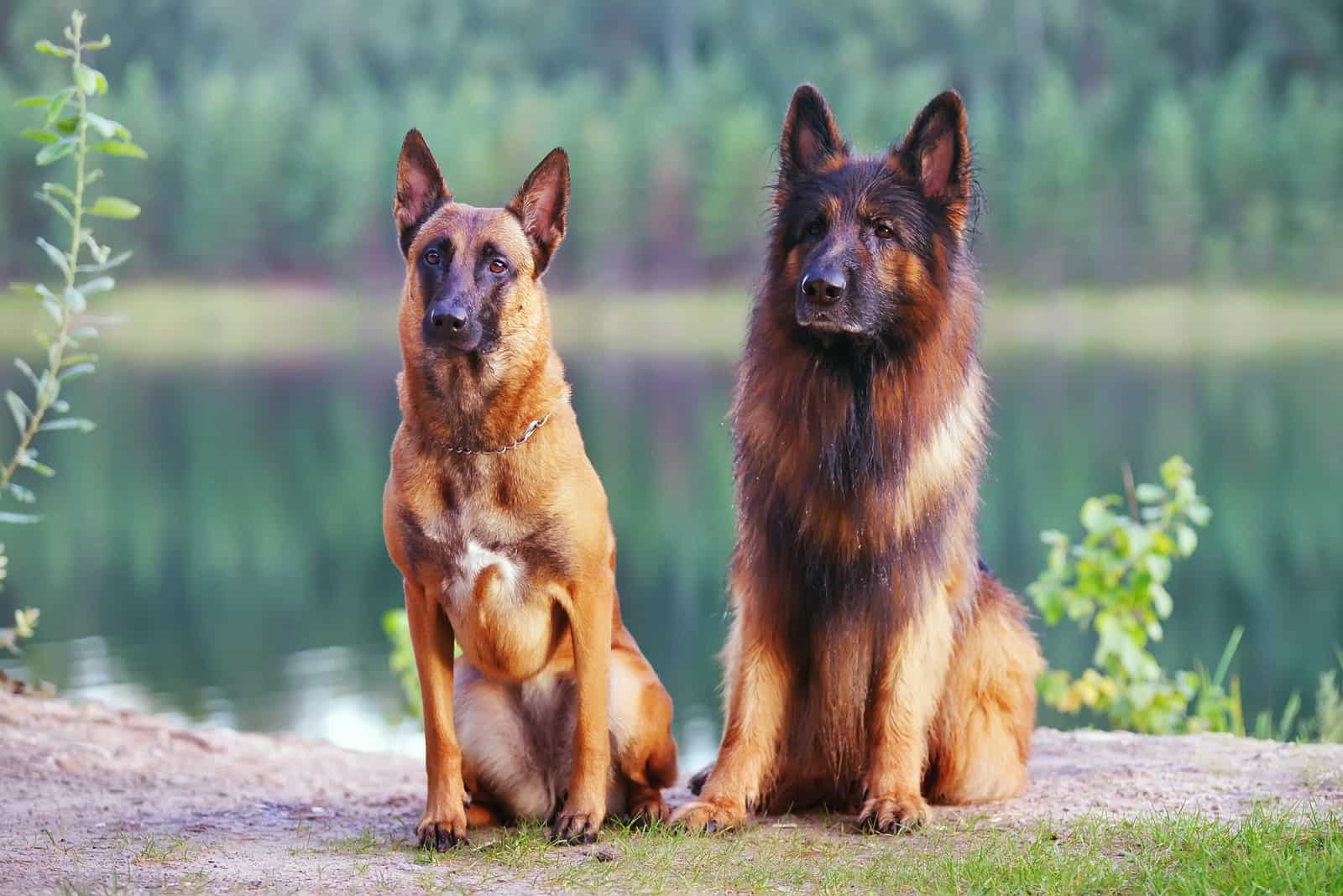While people often tout that the German Shepherd is the world’s best guard dog, there are other options out there who can give them a run for their money like the Belgian Malinois.
But, which one will come out on top in the German Shepherd vs Belgian Malinois comparison?
The German Shepherd vs Belgian Malinois debate is nothing new. It’s something people commonly ask themselves when they’re stuck choosing between two breeds.
They’re quite similar in both appearance and temperament, both highly disciplined dogs with imposing figures and both very protective of their newfound families, but there are a few key differences which can inch one ahead of the other.
Some positive, some negative, depending on your point of view, but you won’t be making a bad decision going with either one.
It’s more a question of slight nuance and overall compatibility which may eliminate part of the work needed around your future pooch.
So, if you want to find out how these two wonderful dog breeds compare against one another and which one is the objective winner alongside finding out a few answers to the more commonly asked questions regarding the two, be sure to read on.
German Shepherd Vs Belgian Malinois: The Rundown
The German Shepherd
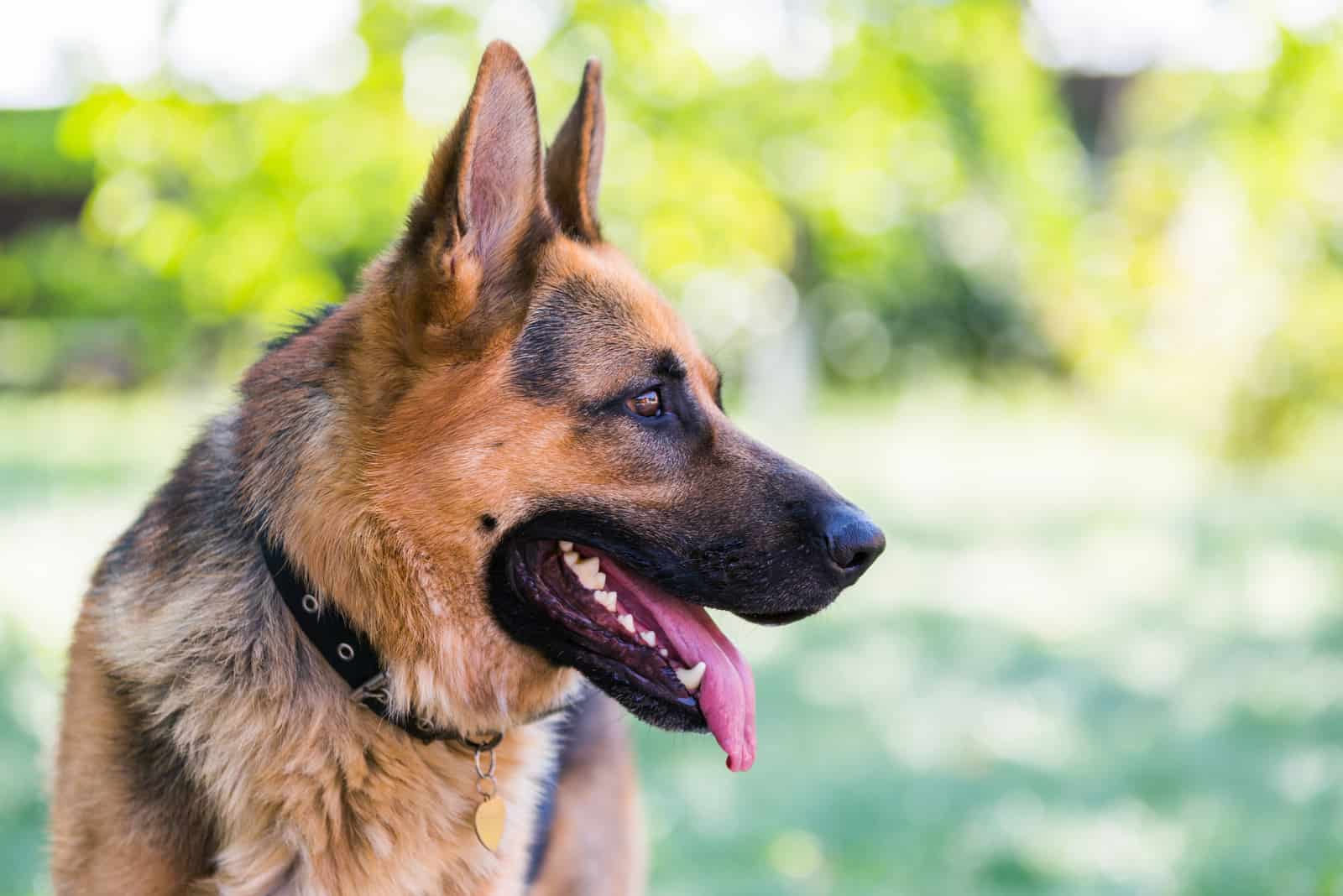
First up is the German Shepherd, the first breed that comes to mind when thinking of discipline and defense, the ideal watchdog.
Breed History
The German Shepherd, despite being one of the flagstone representatives of dog kind, is surprisingly not that old a breed, only coming in the late 1800s.
Before the year 1891, there weren’t any particularly standardized dog breeds in Germany, at least as far as their shepherd dogs were concerned, instead there were plenty of breeds that performed similar duties, but had vast physical differences.
The so-called Phylax Society remedied that as it aimed to have the breeds conform to some sort of standard, or at least it tried to, but failed, though it was an inspiration for people to continue their work further down the line.
One man in particular, captain Max von Stephanitz, around the year 1899, saw the product of one of the first generations of German Shepherd.
One that was raised through a lot of selective breeding and made to be the ideal working dog, at least in the eyes of Stephanitz.
He’d buy the dog and found the Society for German Shepherd Dogs of which his pooch, Horand von Grafrath, would be dubbed the first registered GSD of.
News spread fast and the society gained in popularity at a breakneck pace, gaining more and more members not just in Germany, but internationally, all of which wanted to be part of this legacy.
The first GSD fathered an astonishing number of children who would only continue on that route, primarily dealing with inbreeding in order to maintain the traits Stephanitz coveted so dearly.
The first modern GSD, one with the traits we know today, is believed to be Horand’s son, Beowulf.
Given the dog’s impeccable reputation, it was soon adopted to be more than just a working dog, but an army and guard dog as well, Nazi Germany in particular as it had the traits that their doctrine respected and they deemed it a good representative of it.
While a dark blemish on the breed’s otherwise stellar past, it’s one worth noting as the breed wasn’t at fault here.
They had other darker representations, namely being a favored breed of gangsters and other crooks of slightly higher caliber, but, in the later years, they also became a favorite for the police force, the well known K-9 units.
As for when they were introduced to our shores, that came around the year 1906, a little bit after they got popular in Germany and would get certified by the AKC (American Kennel Club) 2 years later, in the year 1908.
Appearance
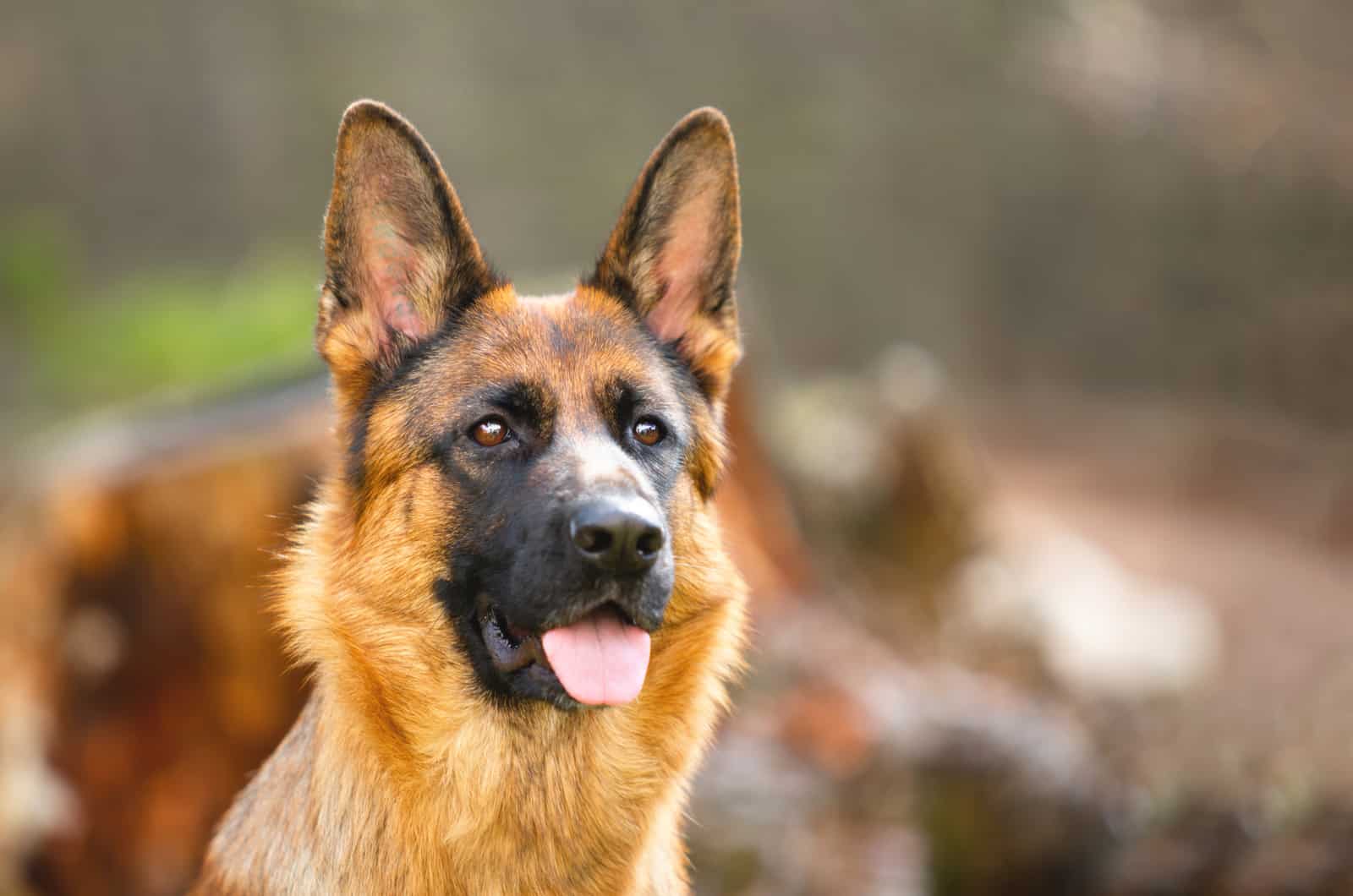
Most people have seen or already know what a German Shepherd looks like, but it’s still worth pointing some characteristics out.
They’re considered to be an intermediary between medium and large dog breeds, coming in at around 25 inches for male representatives and around 23 inches for the female GSDs height wise.
As far as weight goes, that one has a more drastic difference, with the males being bulkier, sporting an impressive 75-80 pounds on average as adults while females are leaner, only carrying around 57-62 pounds on average.
Though, even with that, there’s still a lot of wiggle room as to what’s considered a healthy weight.
Their head forms a rather imposing figure with their longer muzzle which appears like it was chiseled from a rock with its square features, a darker nose, large, sharp teeth and a very powerful jaw.
Aside from that their forehead is somewhat domed, making them appear as if they’re glaring at their target or as if they’re focused.
Then you have their ears which stand upright, as if on alert, and are rather large in comparison to their head overall.
Its head movements often resemble that of their lupine ancestors with their long necks and positional adjustment depending on the type of movement that it’s performing.
It’s either lowered when stalking prey or running, or raised when he notices something or someone of interest.
Moving over to the body, the GSD is covered in a nice and dense double coat paired together with a thick undercoat, keeping him nice and warm during the cold winter months.
While medium fur length German Shepherds are the standard, you can also find long haired ones, albeit they’re a lot less common than the former.
Said fur comes most commonly in the familiar mix of tan and black, but there are various other options out there paired together with their various black body markings, but more on that a little later.
Finally, they have a relatively long and bushy tail that completes the beautiful ensemble of the ‘ideal working dog’, as Stephanitz would put it.
Temperament
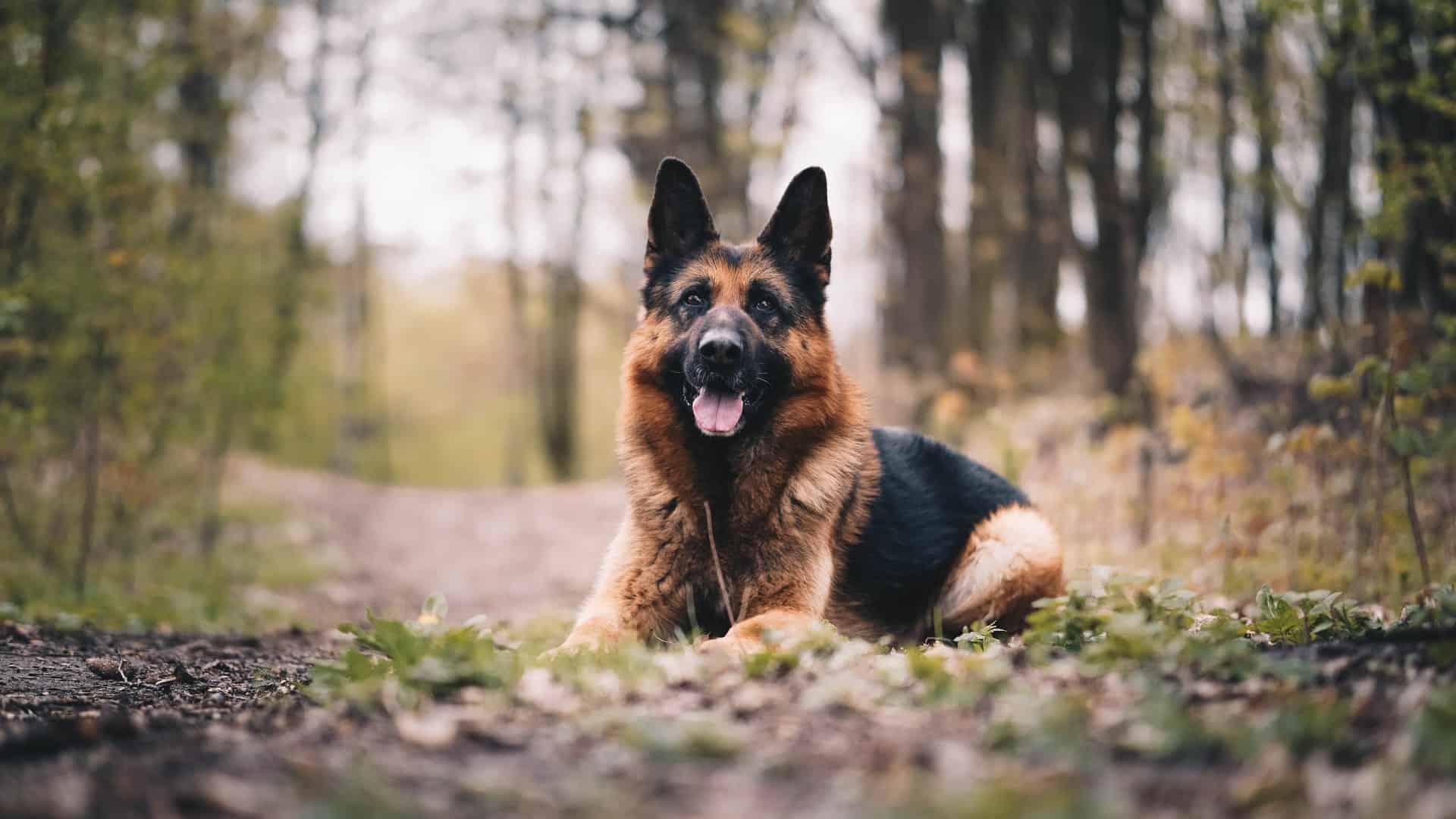
As mentioned before, a German Shepherd is the ideal type of dog in case you need one to guard property, watch out for intruders or be used as a general working dog due to their exceptional desire to do things and motivation to learn new things.
After all, their main intent was to be a herding dog, and they tend to not only be really active dogs, but also extremely intelligent ones.
They make for exceptional search dogs too once trained properly due to that same high level of curiosity toward discovery.
Aside from that, they’re highly favored as service dogs, whether it be in the position of being a military dog or handling police work.
That said, they certainly do have temper problems and aren’t recommended for people who can’t reign that in, especially first time dog owners.
They’re only really loyal to their family, but they tend to get a bit overprotective, wary of any strangers that may arrive at your doorstep.
On top of that, their high prey drive and ingrained shepherding nature will have them nipping away at your kids to try to get them to fall in line or similar which isn’t pleasant for them.
In terms of attacks on humans, they’re up there with Pit Bulls, albeit not nearly as common, but they are dangerous, mostly because people haven’t successfully trained them.
That’s why early socialization as part of their dog training is a must or else you’re going to end up with a problem on your hands.
Though, if you manage to complete their training properly they’ll be one of the most loyal and disciplined pets you could ever own.
Coat Colors
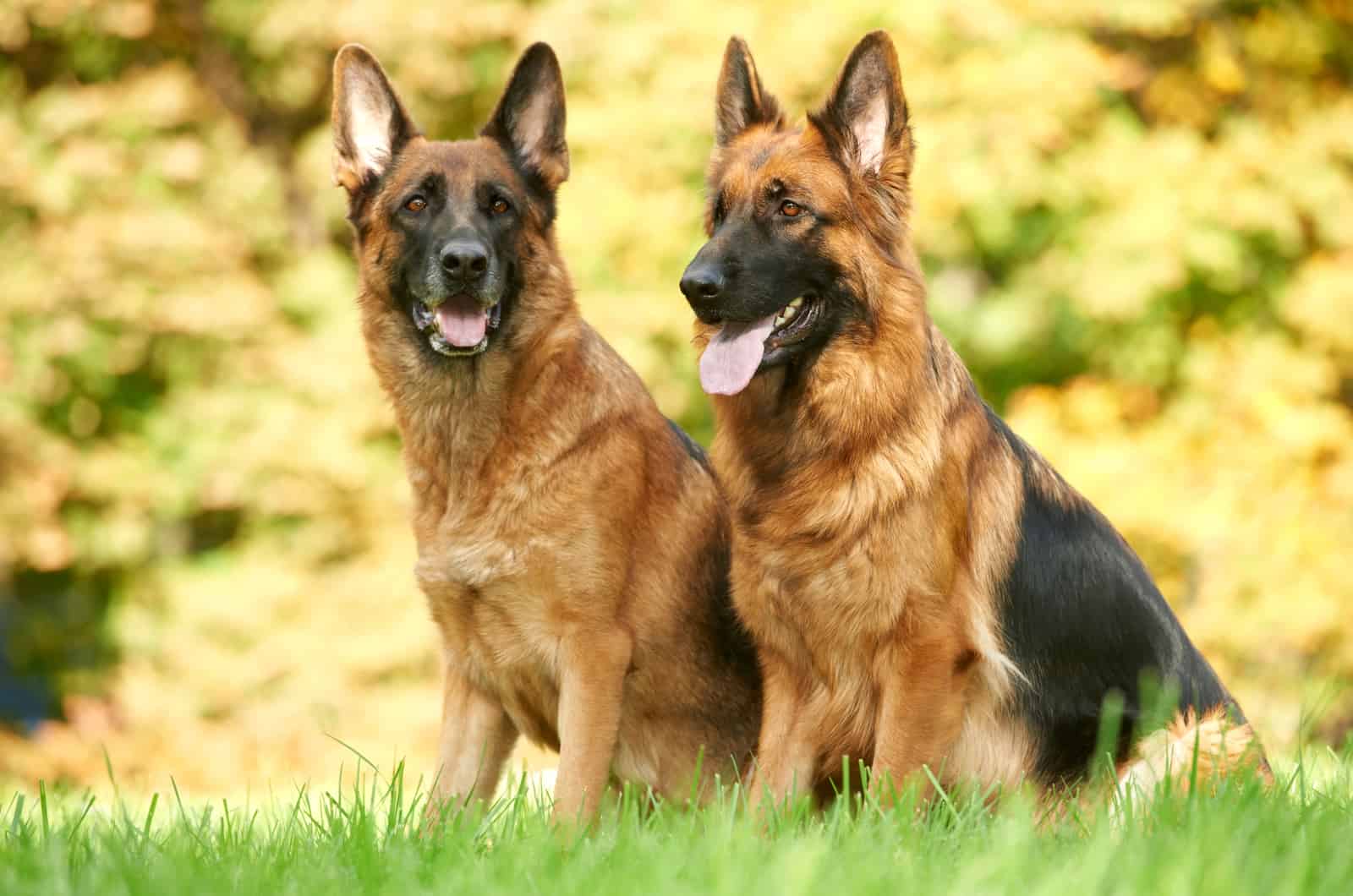
While the most common one that we end up seeing is black and tan, there are multiple other coat color options for the German Shepherd, albeit rare to see.
The standard colors are as follows:
- Black and Tan
- Black and Red
- Black and Silver
- Black and Cream
- Black
- Bi-color
- Sable
Of course, there are some non-standard ones too, albeit not approved by the American Kennel Club, though it only really matters if you’re looking to take your GSD to conformation shows.
Here are most of them:
- Gray
- Isabella
- Blue
- Blue and Tan
- Liver
- Liver and Tan
- White
Though, most, if not all of these colors can also come out lighter, seemingly washed out as well while still qualifying as a unique color.
Lifespan
The average lifespan of the German Shepherd is, by all counts, average when keeping large dog breeds into consideration, coming out at 9-13 years.
Despite seeming like too little, it’s the average for large breeds given how many health problems develop for them the older they get, particularly regarding the spine due to their center of gravity.
Through proper dieting and health check-ups, they can make that 13th year, but the average tends to be at around 10-11 years.
Grooming Needs
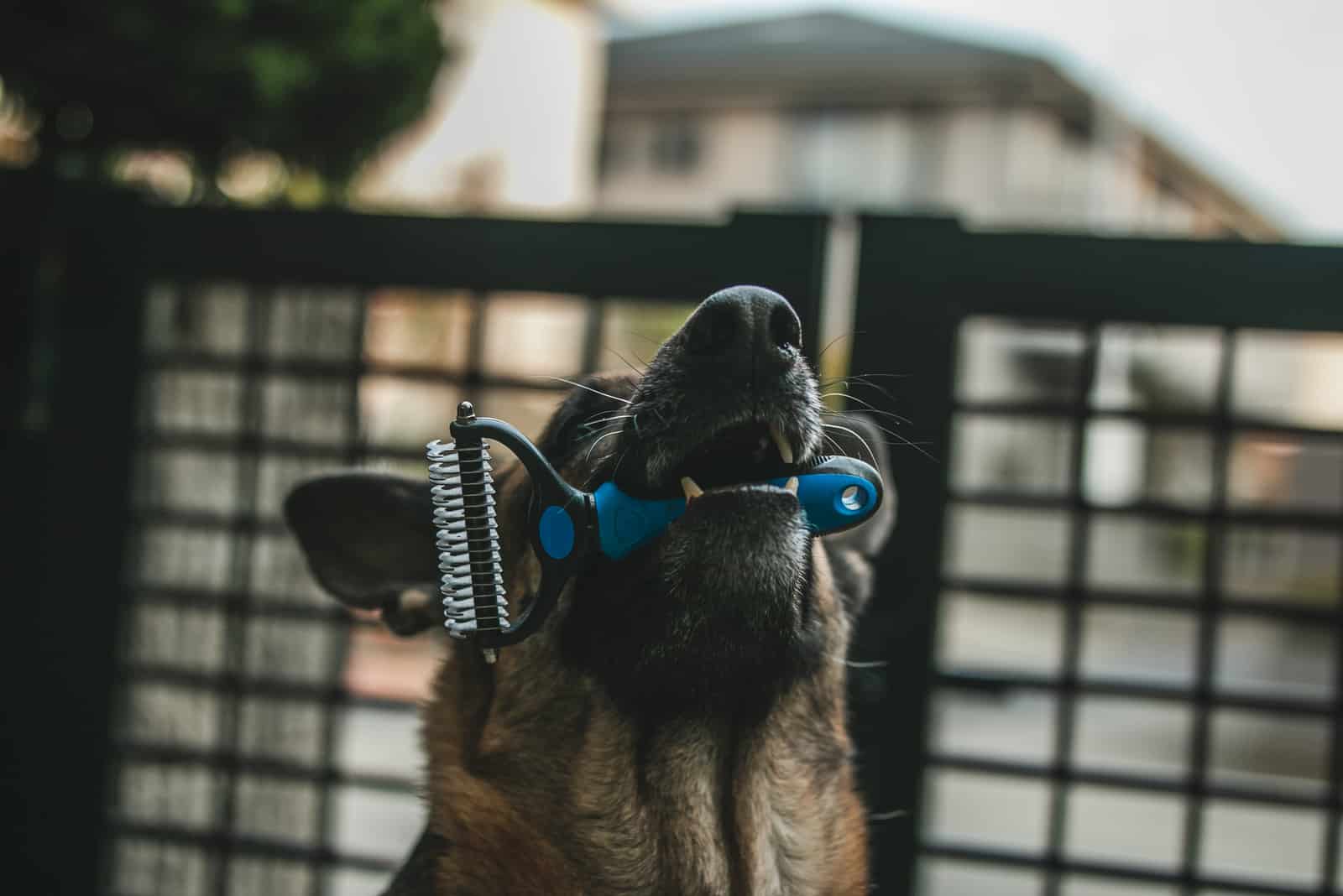
German Shepherds are considered to be moderate shedders and will often require brushing every other day.
That number can go up to once a day once shedding season really hits if you want to prevent any excess hair sticking to your furniture and all over your household, not to mention it helps keep your dog more comfortable once all the loose hair is out.
As for bathing, once every 6 weeks or so should suffice, the standard amount as dogs don’t really need to get bathed that often considering they’ll groom themselves more often than not.
Plus, frequent bathing will damage their fur and skin, even with the gentlest of shampoos.
Their nail situation should be inspected every week and kept trimmed by their pet parent when it grows out a bit too far.
It may not seem like much, but long nails are breeding grounds for infection and disease and keeping them neat and short will help improve your dog’s health overall.
And, as for exercise and keeping him in shape, German Shepherds are known for their high energy reserves, meaning they’ll need to get more exercise in than usual to match their activity level.
Around 2 hours of moderate exercise a day is recommended for them to help upkeep their muscle tone and keep them fit overall.
This doesn’t have to be done through walks alone, but can be done through play as well.
Health Issues
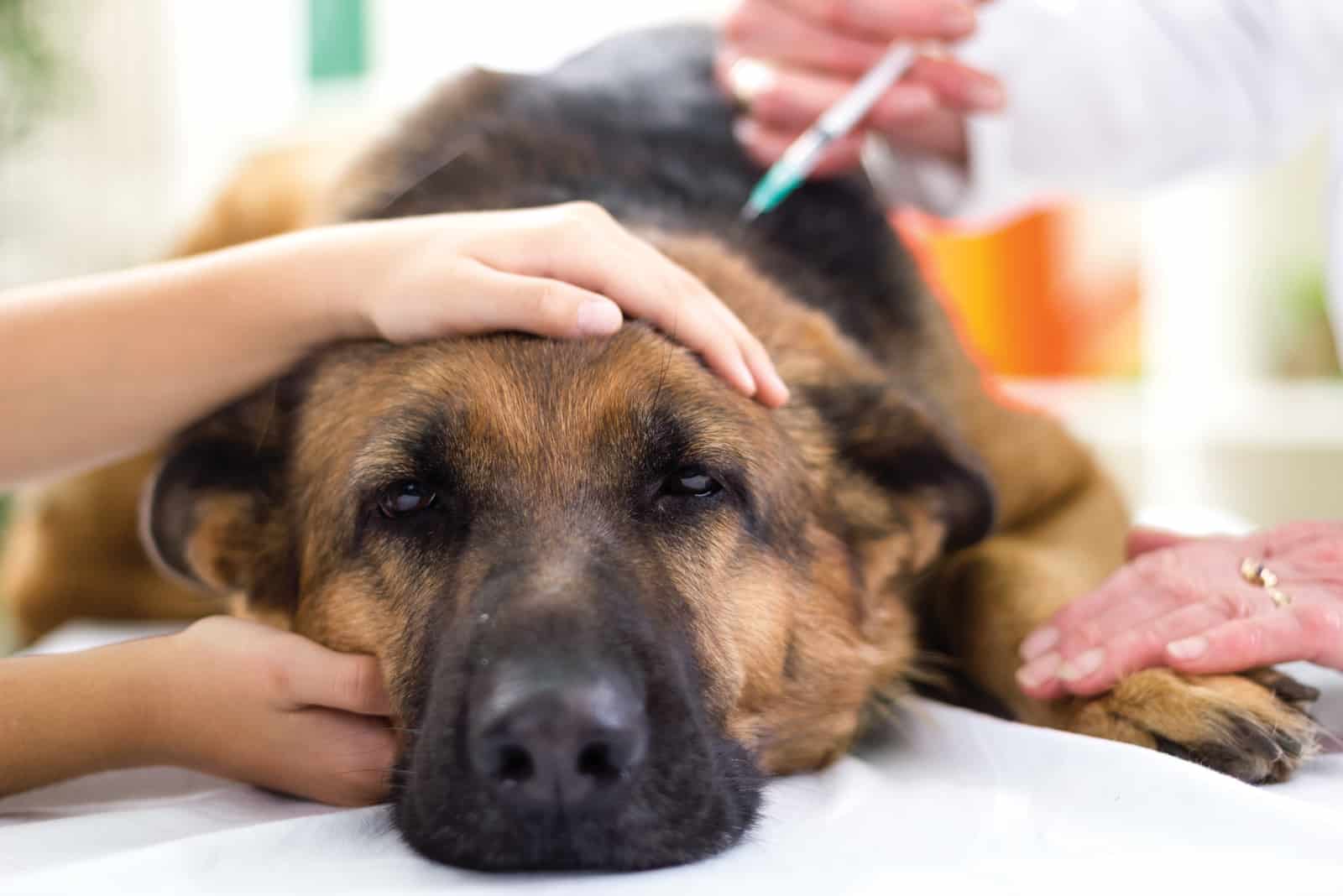
Despite being such a popular dog option, the German Shepherd is still a large dog breed and they’re a lot more prone to health issues than smaller ones.
On top of that, they do have a few hereditary problems which they’re more prone to as well.
Here are some of the more common issues regarding them:
Elbow And Hip dysplasia
The first issues that you’re likely to encounter are hip and elbow dysplasia, a problem where the ball and the socket of the joints get worn out due to friction and the former falls out of the latter, dislodging itself and leading to a great deal of pain for the dog.
It’s not a condition that can be cured, only whose chances of occurrence can be minimized so that it happens later on in life or not at all.
This way you’ll at least spare them the discomfort that comes along with it.
Pain medication can help, but keeping your dog at a healthy weight is the best method of prevention as it removes the extra stress on the joints themselves.
Bloat
Another, relatively common issue with most any dog, is bloat, a condition that happens due to the stomach twisting in on itself after a severe distension thanks to improper contraction.
This happens either due to eating directly after an exercise or not pacing oneself while eating.
It is as bad as it sounds too, with the contents of the stomach ending up trapped inside, whether they’re food, liquid or gas, but that’s not even the worst part.
Having the stomach twist like that can and will restrict blood flow to surrounding organs which can get real bad real fast.
If you notice your dog acting restless with a tense or clearly distended belly, or even dry heaving, take him to a vet immediately.
Despite being a very dire condition, it’s, thankfully, reversible, and the sooner you get him to a vet, the less likely the chance of any permanent damage will be after the procedure.
Degenerative Myelopathy
A pretty serious, albeit non fatal condition that’s inherent in every GSD.
Thankfully, it mostly happens in their twilight years, so there’s a good chance that it can be avoided, but it’s still a risk you should be aware of.
Degenerative Myelopathy is a condition that causes a progressive lack of motor function in a dog’s hind legs at the start, and can extend to his forelegs too if allowed time to progress.
It also involves incontinence at a certain point, which can lead to a real messy house unless you deal with it properly.
The early stages can be solved through the use of a doggy wheelchair of some kind, but the late stage form of it usually leads to the dog being put down for his own good.
Unfortunately, there is no cure, though, much like with hip and elbow dysplasia, you can potentially delay it or minimize the risk of it occurring through physical therapy.
Pannus
Finally, there’s one more condition that’s hereditary for the German Shepherd that you should be aware of, Pannus.
While not something immediately dangerous, it is something that your dog will have to deal with for the rest of his life.
It’s a condition that causes a pinkish mass to start slowly jutting out from under his eyelids.
It will mostly cause irritation at the start, but if allowed to progress too far, can lead to loss of vision or total blindness for the affected canine.
Smoke and increased exposure to UV light can expedite the condition, but various topical ointments and steroid injections can help slow, halt, or even reverse the progression of the condition in some cases.
Cost
The German Shepherd, despite being one of the more useful dogs to have around your home, doesn’t cost as much as some show dogs do, coming in at a pretty standard cost, albeit with a wide range of difference.
You can get them for as low as $450 and as high as $1900, depending on level of training, accolades and genes among other benefits.
It’ll vary from breeder to breeder, but the average price that you should be expecting would be around $900-$1000.
As always, that’s not the only cost you should be aware of, as there are health bills to be considered, as well as costs for dog gear, food and the like which will amount to a lot more than the initial dog purchase price.
I know that you may be a dog lover, but you need to make sure that you can financially support a new addition to your family without it being a detriment in the long run, both for your sake, and the dog’s.
The Belgian Malinois
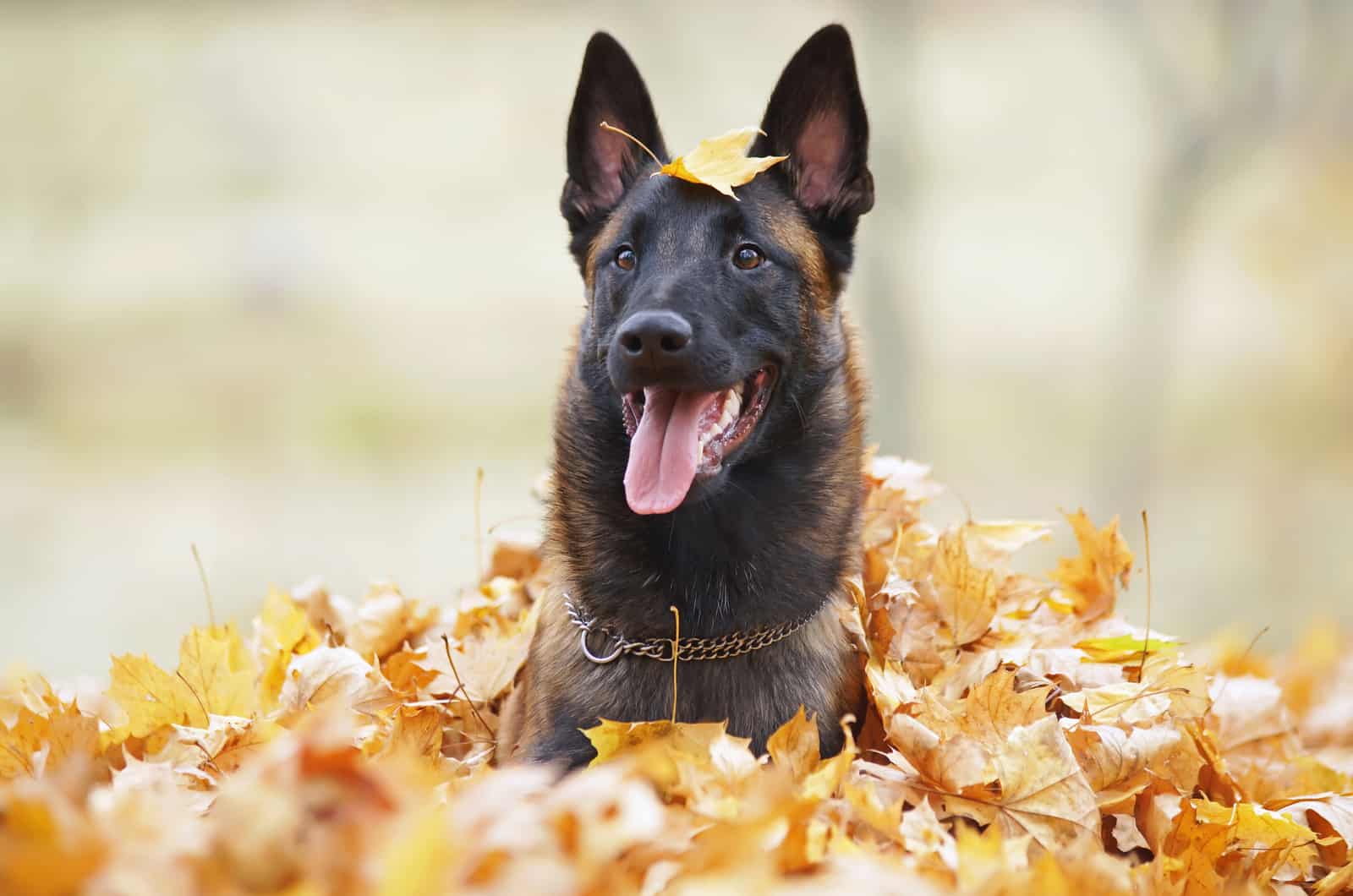
Next up in the German Shepherd Vs Belgian Malinois competition, we have the latter of the two, often considered to be the smartest dog in the world, but also one of severe discipline and strength.
Breed History
While similar to the German Shepherd in terms of appearance and use, the Mal’s roots are a bit different than the former.
They were still used in similar fields, acting as a shepherd breed alongside their use as a working dog and even a family dog in a sense.
They hail from Malines region in Belgium and are one of the 4 herding breeds bred there in the latter half of the 19th century alongside the Laekenois, Groenendael and the Belgian Tervuren.
The Malinois highly energetic and deathly loyal partners to any dog owner who treats them right and provides them what they need, companionship and physical activity.
Breeders have selectively bred this dog breed to be strong, lean and capable of enduring lengthy labor.
A Mal has a simple silhouette and is built fit, with strong muscles where it counts. He has a proud, somewhat imposing posture about him.
These traits serve them well when needing to herd livestock, or, more recently, serving as search and rescue dogs, guard dogs, watchdogs or police dogs.
The various coat colors are exceptional too, coming in fawn, fawn sable, red, red sable and even mahogany, each only adding to their beauty.
This is further complemented by black coloration around the ears and mask that make him seem even more imposing, similar to the GSD.
These Belgian shepherds are very intelligent dogs too, causing almost no trouble during training and understanding the whole process with ease.
They are demanding, but they’ll give so much back in return, though the opposite is true too.
If their great needs aren’t met, the Belgian sheepdogs often end up more instinctive where they don’t have set limits, usually leading to aggression problems and similar.
So make sure to treat this beautiful dog breed right, and it’ll treat you even better in return.
Appearance
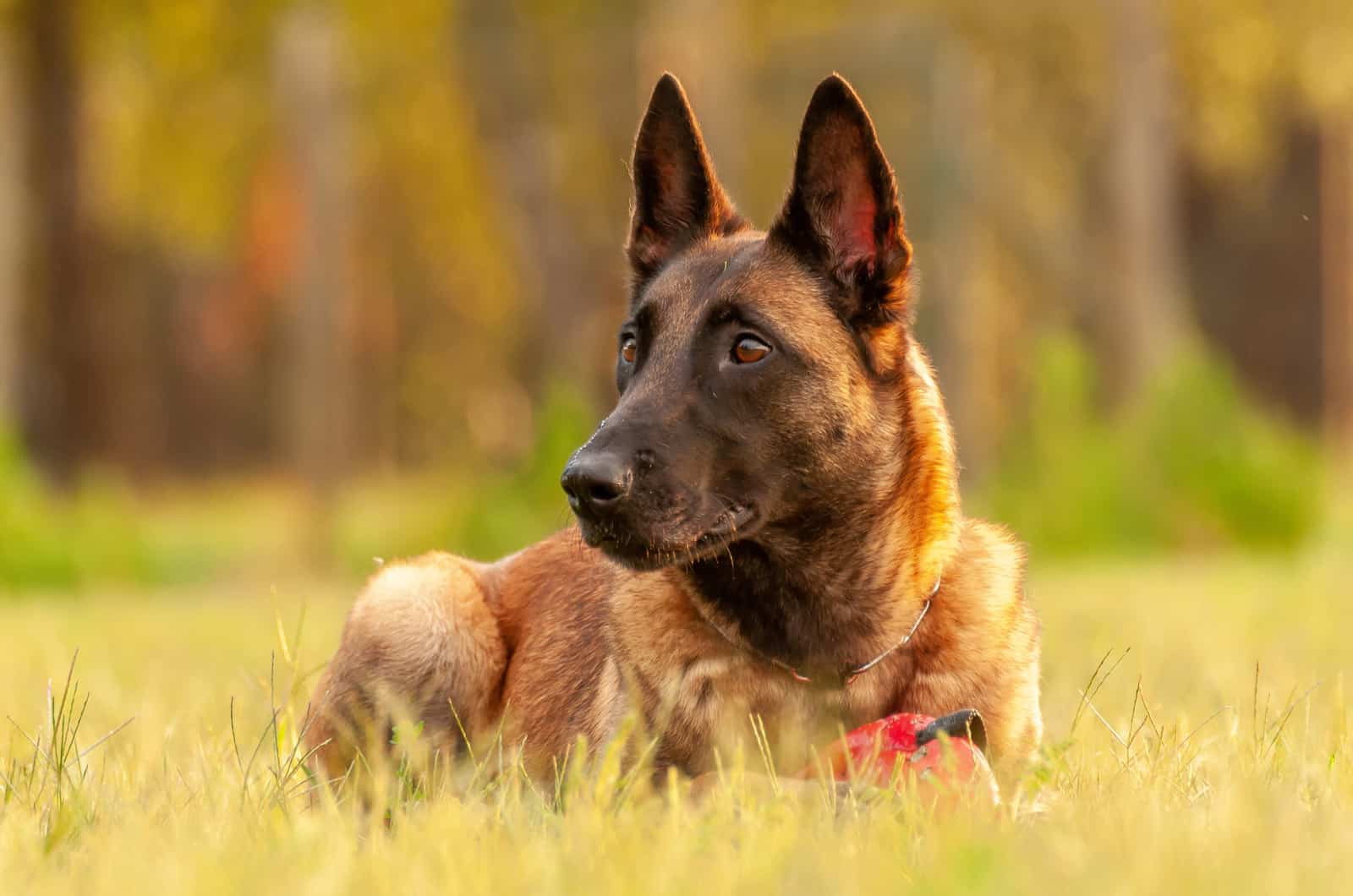
As mentioned earlier, the Belgian Malinois does closely resemble the German Shepherd both in build and specific coloration, but there are definite distinctions.
They grow to around 24 to 26 inches in height on average, placing them on the in-between of a medium and large dog breed, with an inch or two less for female representatives of the breed, similar to the German Shepherd.
Weight wise, they come up to around 60 to 70 pounds for males, with females going down to around 55 to 65 at most.
They have relatively smooth and short coats that mostly come in shades of brown by default with a mask on their muzzle similar to that of a GSD, with darker areas covering the ears and the face.
They have a proud, more noble posture, elegant in a sense which helps accentuate their intelligence a step further.
The head shape itself is similar to the German Shepherd’s, more defined than other dogs with a slightly imposing figure.
RELATED: Belgian Malinois Growth Chart: When Do Mals Stop Growing?
Temperament
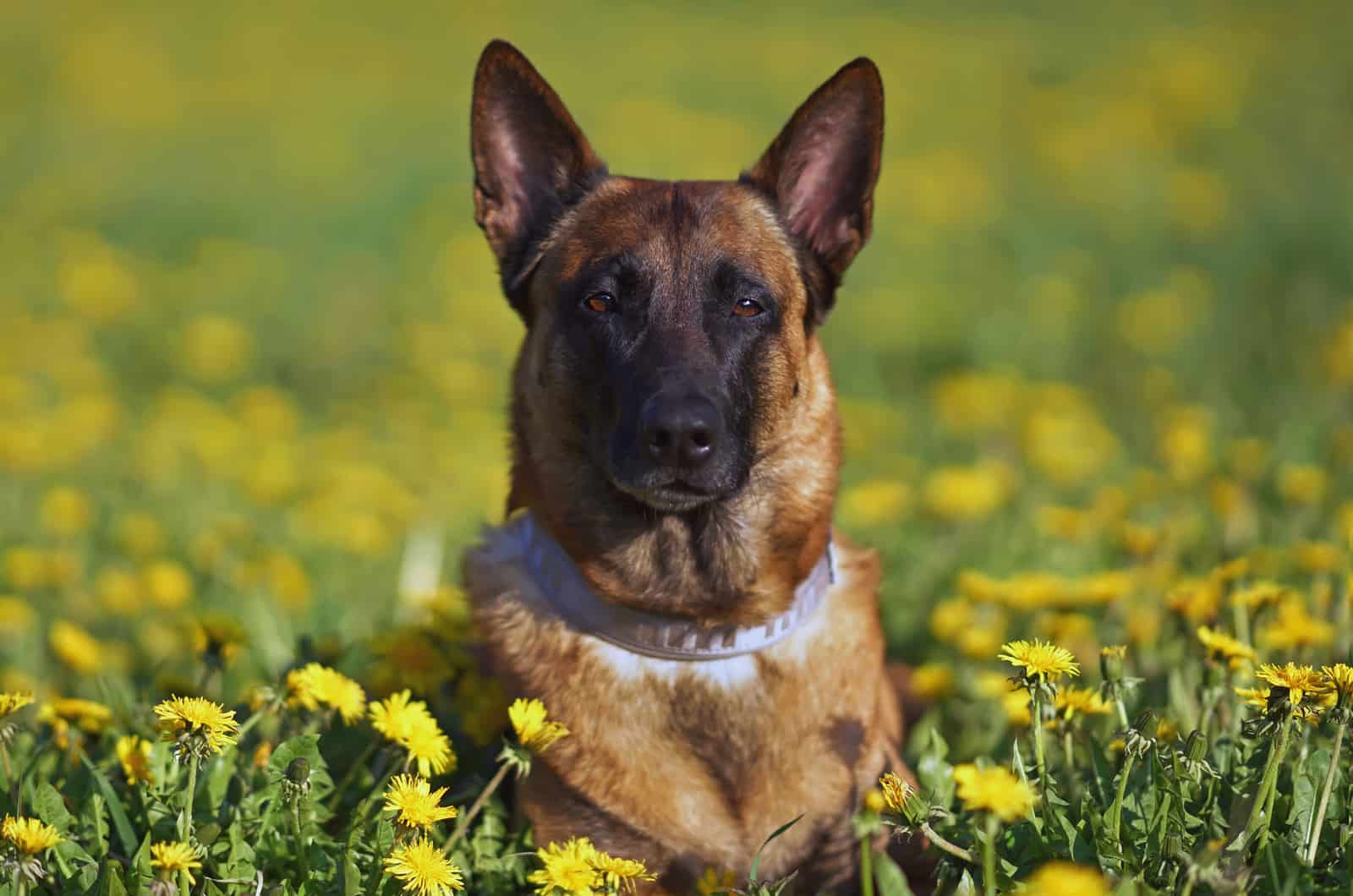
As far as their temperament goes, they’re relatively tame, their intelligence leaning to them being relatively easy to train as they understand basic orders really well which makes further puppy training even easier.
They’re a good mix of both work dedication and empathic affection that will work well in almost any household, making for the ideal family dog, on par with that of the Golden Retriever in my opinion.
Their loyalty is unmatched as is their willingness to protect the ones dear to them.
That said, these positives have a level of negativity to them too as this intensity can be transferred over to new members of the family, namely younger kids.
The ingrained desire to shepherd younger and more helpless members of a ‘flock’ from their use as herding dogs will lead to them nipping at your kids to get in line should they misbehave, which can be scary for them.
This is a similar problem to that of the GSD and is fixed in the same manner, through early socialization that’ll teach them right from wrong, and the best method of doing so is through positive reinforcement given their high intelligence.
Speaking of which, the intellect is also a double-edged sword as most highly affectionate and highly intellectual animals desire companionship, and, if that isn’t fulfilled, they tend to spiral into separation anxiety.
This can then lead to severe bouts of depression or, more commonly, outbursts in an attempt to grab your attention by tearing into your furniture or your slippers.
These dogs may not be too demanding in terms of physical needs, but their emotional needs do need to be met, otherwise I doubt it’s an option you should go for.
Back on the more positive side, they’re also dogs who have high energy levels and love going outside to run around, get some fresh air and play with their owners, and physical stimulation is as important as the mental one is.
They’re not as demanding in that one as their competitor here, only needing about an hour, hour and a half of exercise daily.
If you can manage all of this, you’ll have one of the best all-rounder dogs on the market.
RELATED: Are Belgian Malinois Good With Kids? Detailed Explanation
Coat Colors
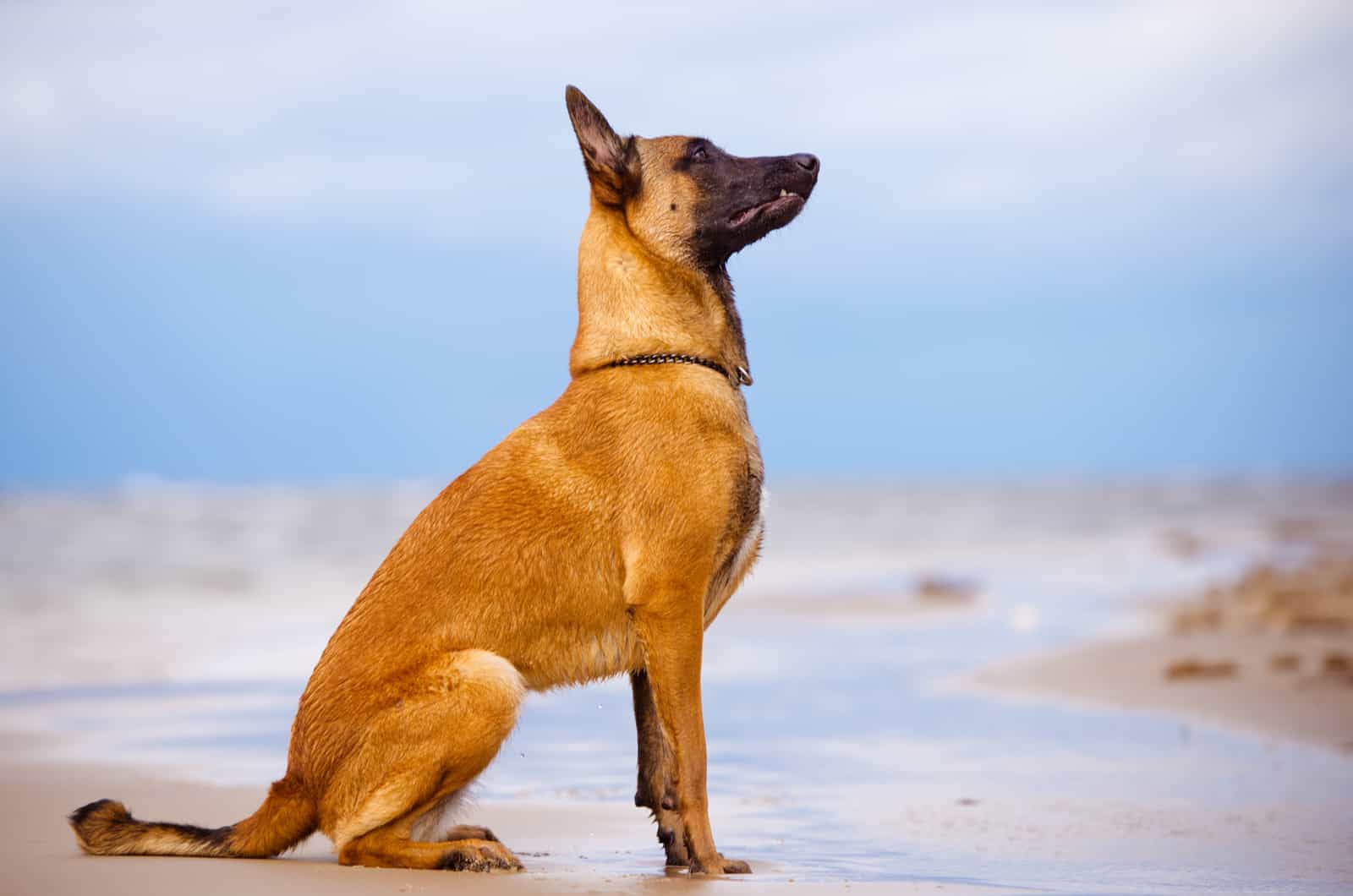
Despite the many coat colors on offer, the Belgian Malinois only has a few standard ones that are accepted by the AKC:
- Mahogany
- Red
- Red Sable
- Fawn
- Fawn Sable
All the rest are considered to be non-standard as they’re genetic anomalies, but again, this shouldn’t really be that big of an issue for you unless you’re planning to enter him in conformation shows.
Here are the more common non-standard colors for the Mal:
- Black
- Brindle
- Cream
- Gray
- Liver
- Gray Sable
- Cream Sable
Lifespan
Despite their size, the Belgian Malinois is a relatively healthy dog breed, sporting an average lifespan of around 12 to 13 years of age, topping out at age 14 if everything aligns from healthy dieting, good genes and little to no serious health issues growing up.
It’s definitely more than what a lot of medium to large breeds get, and about the average for a dog as is, just make sure you provide him as good a life as you can so the period he does spend alive is spent in comfort.
Grooming Needs
Given their short coats, the Belgian Malinois doesn’t need an awful lot of grooming done for him outside of shedding season.
Normally you’ll only need to brush him once, maybe twice a week, but once they hit said shedding season, the frequency will be upped to once a day.
Though, be sure to use a slicker brush to reduce the risk of skin irritation in case you press into their fur a bit too hard.
Bathing frequency is the same as most other dogs with short coats, once every 6 to 8 weeks, he won’t need much more as he’s a relatively clean animal.
And again, same with the nails, check them once a week and make sure they’re properly trimmed so your dog doesn’t end up contracting an infection or an injury from overgrown nails.
SEE ALSO: The 6 Safest And Best Shampoos For Belgian Malinois Pups
Health Issues
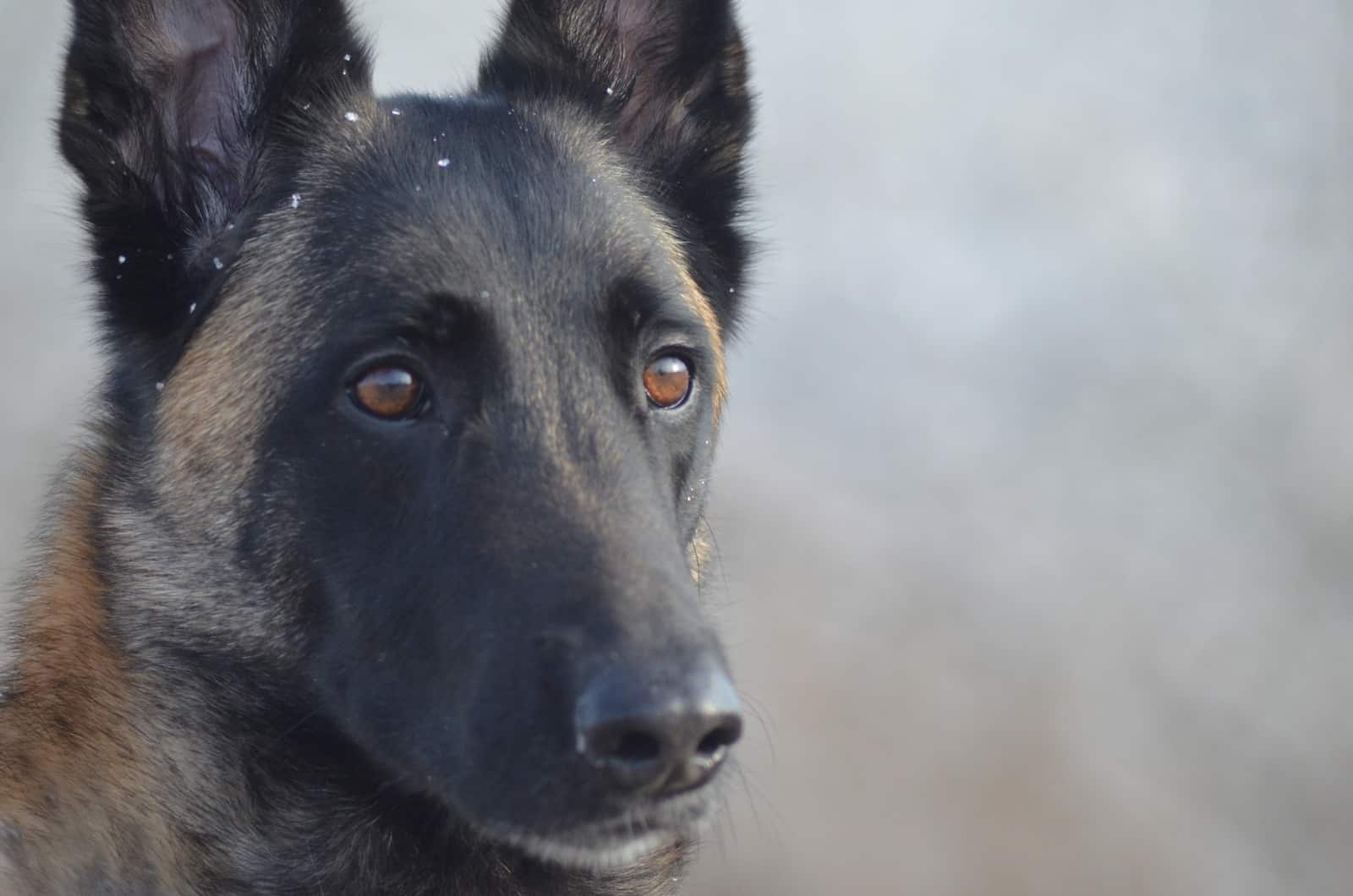
While they are a relatively healthy breed, the Belgian Malinois does still have a few health issues one should be concerned about.
Here’s what they are:
Elbow and Hip Dysplasia
Similar to every medium and large dog breed, and its competitor breed in this case, the Mal is susceptible to hip and elbow dysplasia.
The same method of treatment applies too, keep your dog at a healthy weight and far away from obesity, though if your dog is born genetically predisposed to suffer from it, there isn’t much you can do aside from easing his pains.
Bloat
Yet another issue that the Mal shares with the German Shepherd and any other dog.
To not explain it again, the most effective method of prevention is teaching your doggo how to pace himself when eating to minimize the risk of this particularly heavy health problem occurring.
While it can be reversed, it’s better to prevent than to cure in any case.
Cataracts
The most vulnerable part of a Mali, health-wise, would be his eyes as he has not one, but two conditions that can affect them, the first one being Cataracts.
This is a condition where the ocular lens gets progressively clouded which leads to a gradual loss of vision.
However, it is treatable and often involves a surgical procedure where the affected lens is replaced with a healthy one.
This is best done early, as later stages of cataracts are going to cause further discomfort around his eyes.
Progressive Retinal Atrophy (PRA)
The other condition is another one that’s common with a number of dogs, Progressive Retinal Atrophy.
It’s a condition where the retinal rods and cones deteriorate over time, leading to a procedural loss of vision, starting with night vision and progressing to regular sight.
It will eventually lead to total blindness and there isn’t really a cure for it, but it also isn’t a fatal disease.
Your dog can live his life without much extra difficulty as long as you’re there to assist him.
While breeders always do their best to weed out these hereditary diseases, a few will always slip by or re-emerge in a generation.
Cost
If there’s one clear sign in the Belgian Malinois vs. German Shepherd contest as to who is better in a single aspect between the two, that would have to be the GSD in the cost department, because Belgian Malinois dogs are incredibly pricey.
They range anywhere from $3500 to a whopping $9000, all depending on their lineage, accolades and level of training.
There are some non-standard ones that you can get below the asking price, some claiming to go down even to $1000 which would be a bit more acceptable, but the lowest average is almost double that of the German Shepherd’s one.
It’s definitely an expensive dog breed to get initially, but it may just be worth it, if you can afford him.
German Shepherd Vs Belgian Malinois: The Comparison
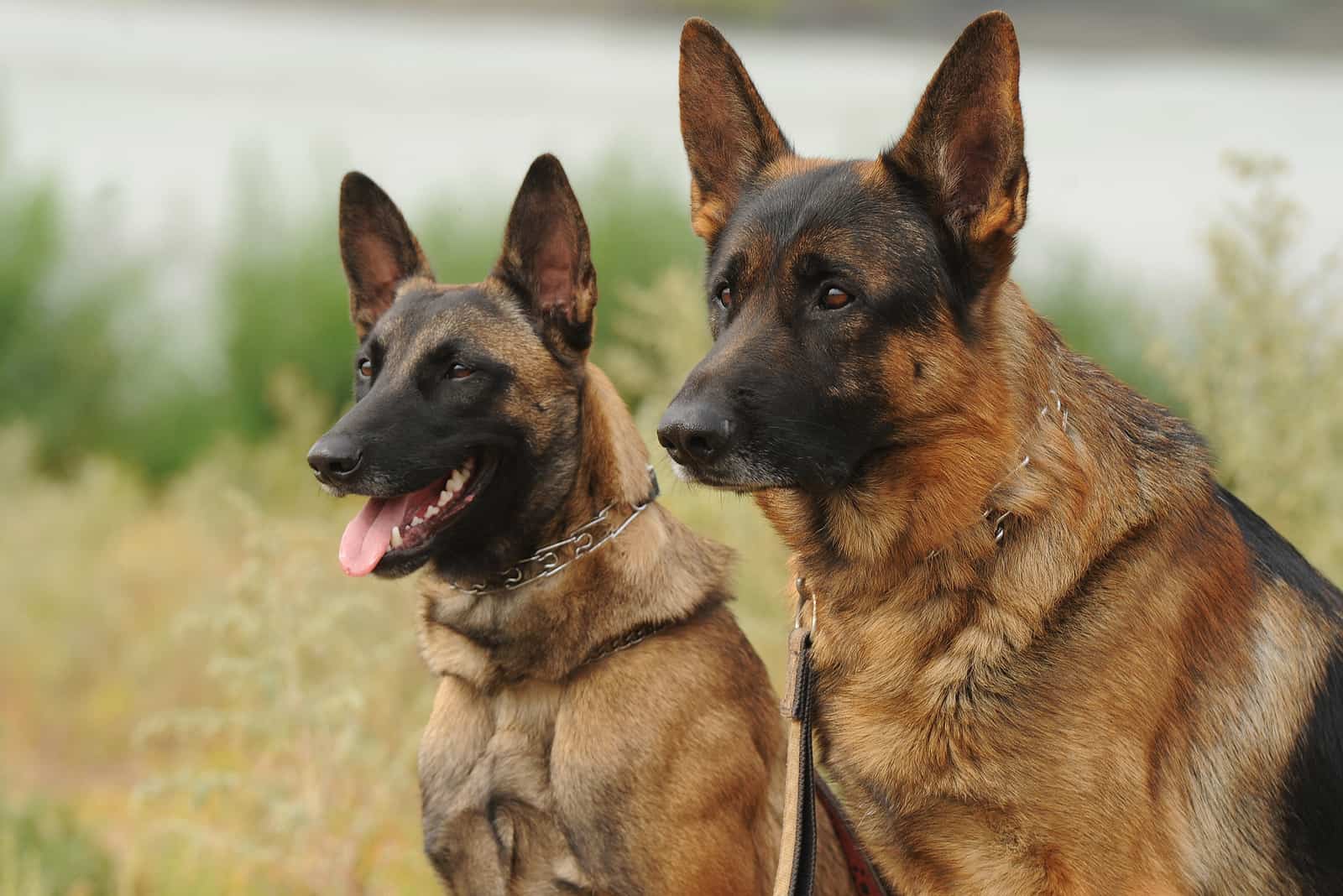
Now that we have most of the important factors in front of us, it’s time to compare the two breeds to see which one comes out on top overall in this little competition.
Temperament: The Belgian Malinois Wins
Sure, their temperament is somewhat similar, but the Belgian Malinois is more of a family dog than the German Shepherd is out of the box.
Sure, both can be trained to about an equal standard, but, due to the Mal’s high intelligence levels and overall more amiable approach to training, he ends up winning this category.
Appearance Variance: The German Shepherd Wins
While a very subjective category that doesn’t carry much merit, the Belgian Malinois comes up a little short on this one, though not by much.
The German Shepherd’s coat color options are more varied and feel richer in color than his opponent, which is why he takes this one, but again, this is a pretty subjective assessment.
Lifespan: The Belgian Malinois Wins
While not too different from the GSD, the Mal does end up winning out on average life expectancy, meaning you get to have your furry friend around for longer if you opt for the Mali.
That said, plenty of factors can skew this, so take that with a grain of salt.
Grooming Needs: The Belgian Malinois Wins
Both breeds shed, that much is certain, but the Belgian Malinois doesn’t shed as his opponent in this comparison does nor does he need to bathe as often.
While the differences are miniscule, the Mali takes this one.
Overall Health: The Belgian Malinois Wins
Though both breeds are prone to a variety of different health problems, the ones affecting the Belgian Malinois are either easier to treat or they don’t come with overly drastic consequences which is why they win this category.
Cost: The German Shepherd Wins
All of the prior categories come in relatively close together, but this one the German Shepherd wins by a landslide.
When the most expensive German Shepherd costs half as much as the cheapest standard Mali, then it’s a no contest win for the former.
German Shepherd Vs Belgian Malinois: The Winner Is…
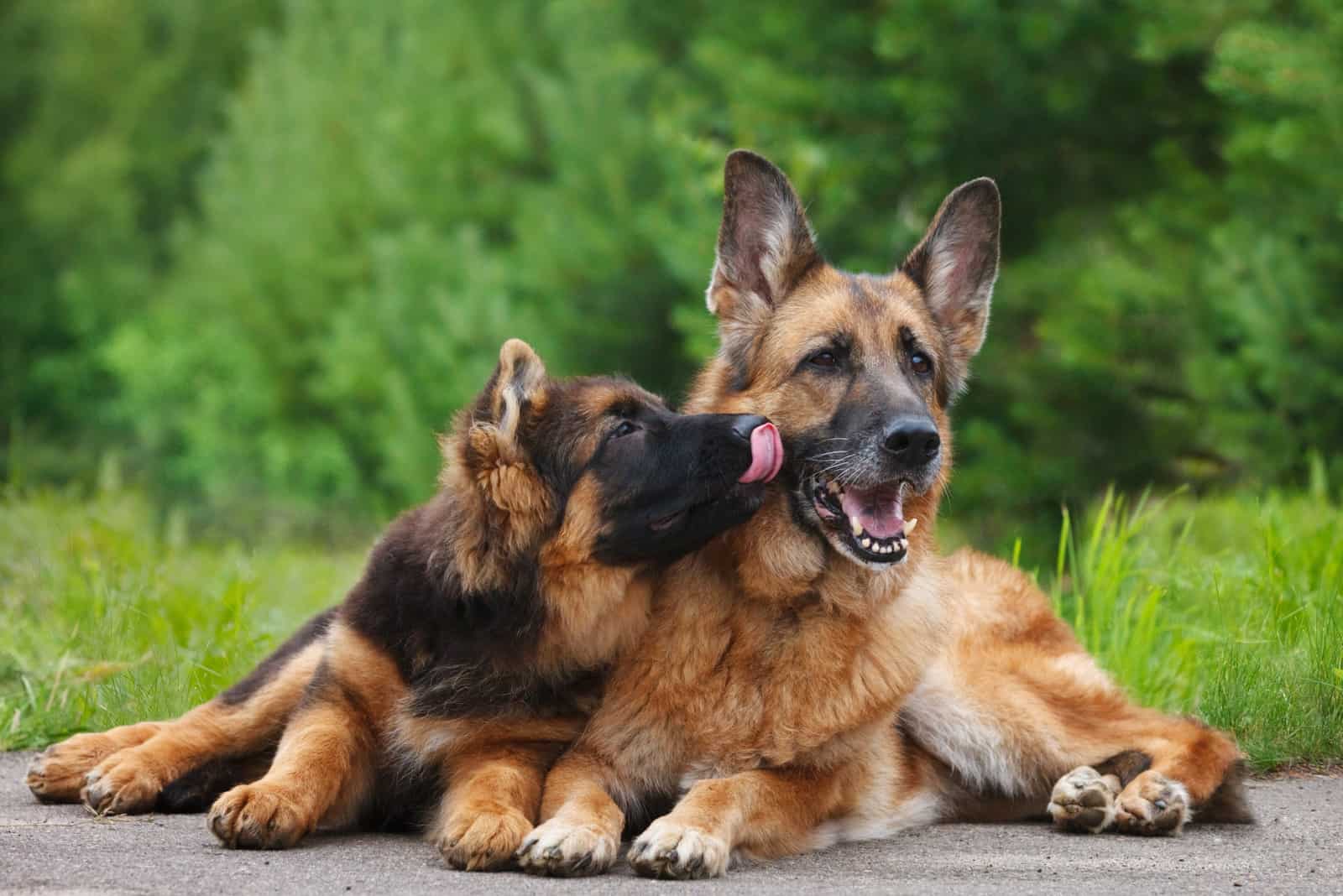
Although the Belgian Malinois has more going for it in terms of both physical health and temperament, I’d say that the German Shepherd is the overall winner here.
Again, this is greatly subjective, but every part where the Mal won were marginal improvements at best, and the average household can definitely use the $2000 difference between the two breeds on average.
As long as you can manage to properly train a German Shepherd, you’ll have an equally obedient and clever dog on your side.
However, if you can afford it without feeling too big of a dent in your finances, then the Belgian Malinois will give you less trouble and be a slightly better overall canine companion.
In Conclusion
While neither of them are looked at for being the cutest dog (though they can be quite cute), the German Shepherd vs Belgian Malinois debate shows just how different two dog breeds can be despite having so much in common.
That said, the question of who the best of them is ultimately falls on you to decide as they excel in a few different fields, though my suggestion still stands that the German Shepherd, while requiring more maintenance, is overall more affordable and thus better.
However, I trust that I’ve provided you with enough info on both of them for you to be able to make the choice of which one suits you best on your own. Until next time, pet parents.
RELATED LINKS:
- How To Identify A Full-Blooded German Shepherd
- 11 Best Sable German Shepherd Breeders In The US
- All About Military Belgian Malinois: Favorite K9 Fighter
- 7 Types Of German Shepherds – All Variations In One Place
- The Best 4 Belgian Malinois Breeders In Ontario
- The German Shepherd Ears Chart: 7 Things You Need To Know
- German Shepherd Raw Diet Habits: Yes Or No?
- The Belgian Malinois Feeding Chart: How To Feed Your Beauty
- Top 7 German Shepherd Breeders In Alabama
- 14 Best Dog Foods For Belgian Malinois: What To Feed Mals?
- How Often Should You Bathe A German Shepherd? 10 Bathing Tips
